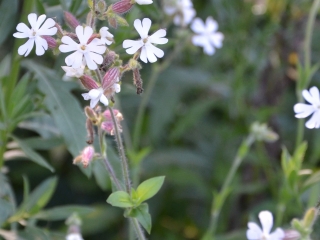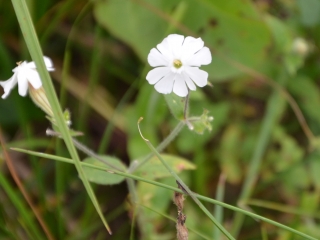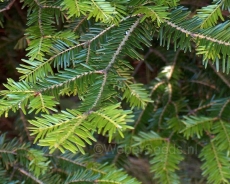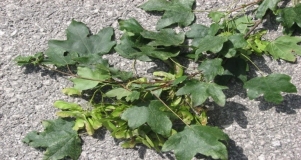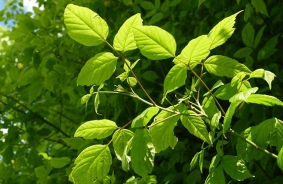White campion Melandrium album
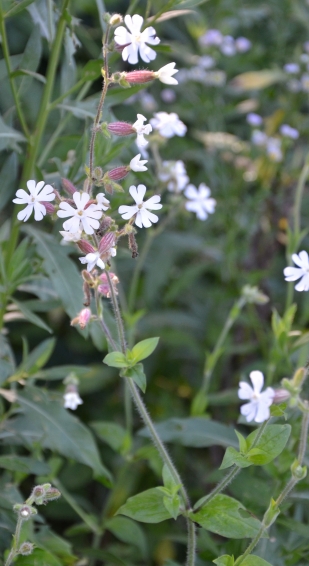
Features
An annual or biennial plant. The flowers are unisexual. A very common species, from the lowlands to the mountain belt, an Eurasian species with a wide ecological amplitude. It appears on meadows, grassy and dry slopes, in ditches, along road embankments, as well as as a weed in agricultural crops. It is sensitive to herbicides.
| Species | Annual and biennial plant |
| Living space | Cultivated areas, Field, Meadow, Treeline |
| Size | 30-100 cm |
Description
Stem erect, round in cross section, densely protruding hairy, dark green. Leaves ovate-lanceolate, lower leaves stalked, upper sessile, densely hairy, reticulate, dark green, rather soft. Flowers in lateral and apical, small-flowered pakobuli?, unisexual, 2-3 cm large. Petals with an edged plate, a small pendant, which is more pronounced in female flowers, and a narrow, up to 2 cm long nail. The sepals grow together into an elongated (male flowers) or ventral (female flowers) calyx tube that is strongly hairy. Anthers 10, neck on pistil 5, protruding from flower. The fruit is a head that opens with 10 teeth. The flowers are usually open in the afternoon on sunny days. It is often grown as an ornamental species. In some cases, it is used for medicinal purposes.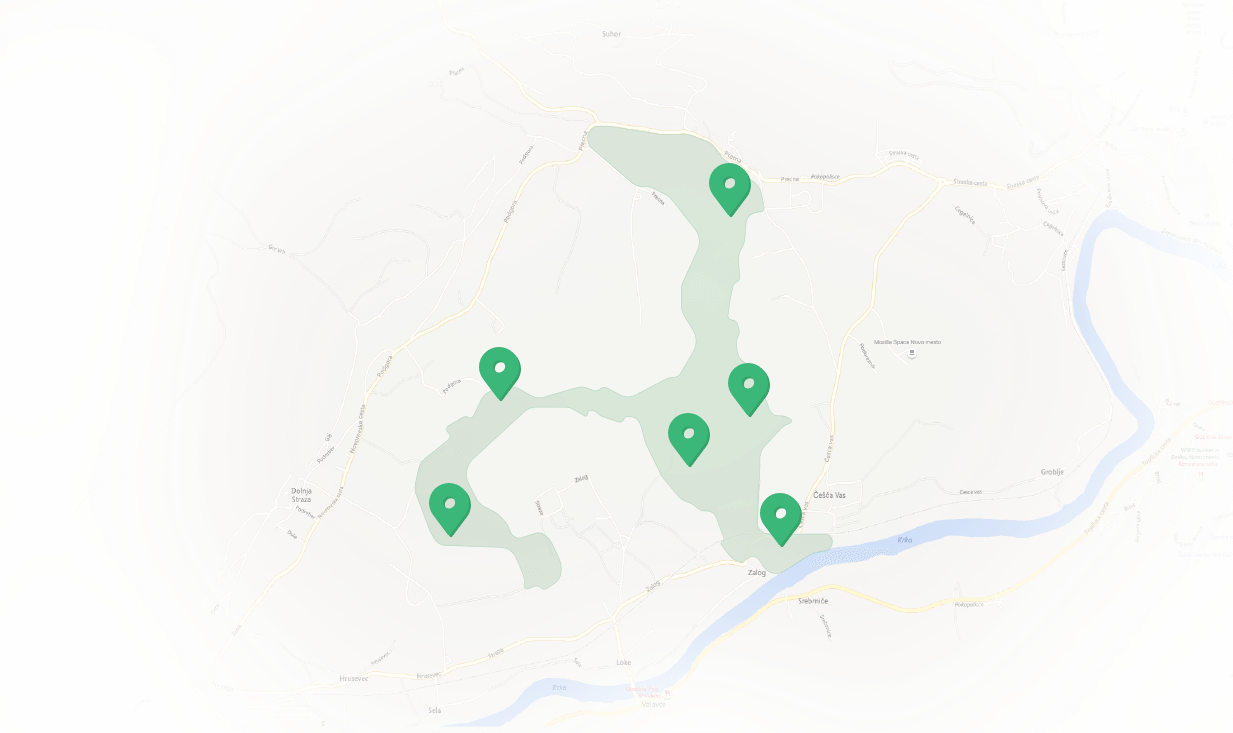
Features Temenica (3)
SPECIAL ogr.

